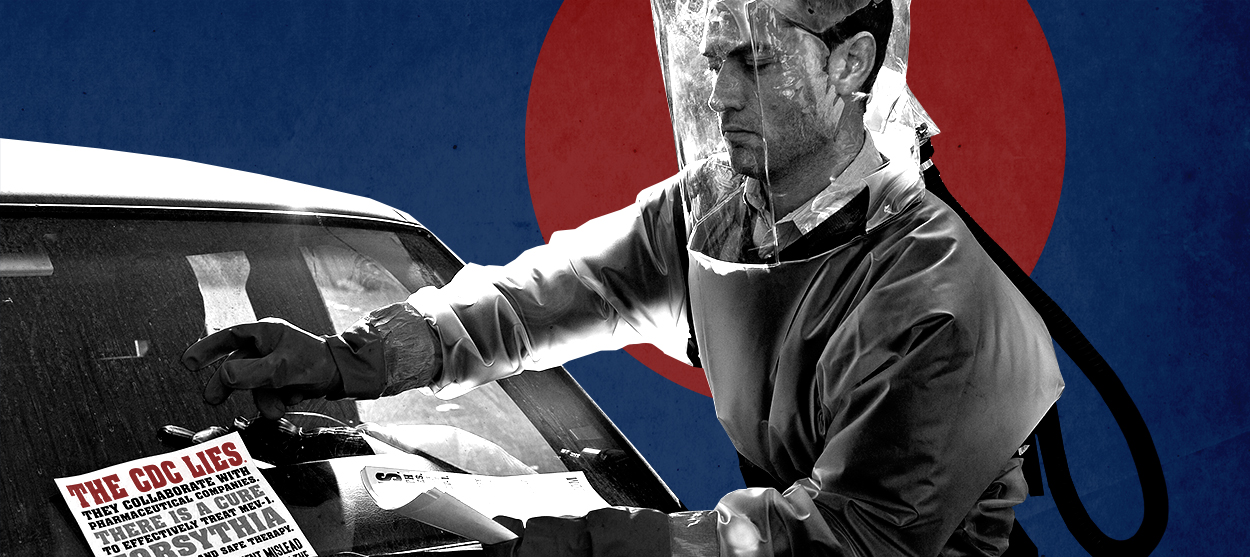Contagion is even more remarkable after a year of pandemic
The 2011 thriller still seems eerily prescient — mostly


Thirteen months ago, I stopped watching movies. Not literally — I'd still turn them on, in an attempt to fill the yawning, uneventful evenings — but mentally and emotionally. Pictures moved on the TV, but my mind was thousands of miles away, worrying about my grandparents and parents. It was blocks away, too, where white tents had popped up on the street outside my local hospital.
Still, like thousands of other people in the spring of 2020, one of the movies I put on was Steven Soderbergh's 2011 pandemic thriller Contagion. I was trying to scare myself with the worst possible scenario, and by doing so, reassure myself that however uncertain things might be, the oncoming pandemic would never get that bad. I think I was too distracted to understand the film at the time, if I'm being honest. Disinformation is the real disease! critics were writing in their smart and timely reevaluations as Contagion rocketed from being the 270th title in the Warner Bros. catalog at the end of 2019 to being the second most-watched movie by March of 2020, behind only Harry Potter.
I preferred the seven-word Letterboxd review by the critic and editor Ella Kemp, who'd watched the movie a week and a half before I did: "Ah yes cinéma," she joked, "the suspension of disbelief."
The Week
Escape your echo chamber. Get the facts behind the news, plus analysis from multiple perspectives.

Sign up for The Week's Free Newsletters
From our morning news briefing to a weekly Good News Newsletter, get the best of The Week delivered directly to your inbox.
From our morning news briefing to a weekly Good News Newsletter, get the best of The Week delivered directly to your inbox.
Disbelief is the rational gift that allows us to enjoy the movies. It's why we can watch Godzilla and King Kong do billions of dollars worth of property damage to Hong Kong without having a panic attack in the theater; it's why exceptions, like the apocryphal story of the crowd panicking while watching "The Arrival of a Train at La Ciotat Station" in 1896, or the drop in beach attendance the summer that Jaws was released, are the stuff of cinematic legend. To enjoy a fictional film, you're supposed to temporarily pretend that Bruce Willis was actually dead that whole movie, that spaceships can make pew-pew sounds in outer space, that Humphrey Bogart is somehow taller than Ingrid Bergman. But anyone who would actually conflate a fictional film with real life is a fool — a member of the crowd stampeding away from an "oncoming" locomotive made only of shadow and light.
When Contagion was first released, so long ago that "Ebola" wasn't yet a reference point, it was praised for the pains that screenwriter Scott Z. Burns and Soderbergh went to in order to make it "realistic." World Health Organization representatives were consulted; virologists offered up their expertise. Actress Marion Cotillard traveled to the actual WHO headquarters in Geneva, while Kate Winslet worked with the U.S. Centers for Disease Control and Prevention to get inside the mind of a frontline epidemiologist. Still, there were holes, contemporaneous critics said: "[F]or all the relentless realism, much of the real drama of epidemic disease never quite makes it to the screen," one science writer complained in The New York Times. In what would become an epic set of famous last words, she added: "[P]andemics are never everywhere. Even in the midst of history's worst, ordinary life has always lurched on."
It's true that Contagion didn't get everything right. Its imagined pandemic kills 2.5 million Americans in 26 days; ours took a year to kill half a million. Contagion, like many disaster movies, is also obsessed with the idea of societal collapse — the riots for food, neighbors killing neighbors, and that whole hostage plot where Cotillard gets Stockholm Syndrome in China. In real life, the most riotous we ever got (pertaining directly to the pandemic, anyway) was banging on pots and pans.
But when I rewatched Contagion this weekend, I was surprised again by how much it gets absolutely right: vocabulary like "social distancing" and "R0," Dr. Sanjay Gupta appearing on TV, concern about mutations, widespread mask usage, vaccination bracelets, and yes, the widely remarked-upon proliferation of dangerous conspiracy theories, which are peddled in-movie by Jude Law. Sure, some of the specifics were off — our breakthrough was in mRNA technology, while the poor dummies in Contagion struggled with a live attenuated virus — but that's to be expected. Certainly the filmmakers got right the part about "ordinary life" not quite lurching on.
A free daily email with the biggest news stories of the day – and the best features from TheWeek.com
Now that I've watched Contagion both in preparation for a pandemic, and as the wizened veteran of one, my quibbles aren't with the specificity of the science or the prescience about changes to society. I'm obsessed, rather, with that question of disbelief once again.
Contagion was originally constructed as a warning: "On more than one occasion I've heard Steven Soderbergh lament the fact that there is no vaccine against stupidity," the movie's science advisor and eventual COVID-19 survivor, Dr. W. Ian Lipkin, told Wired in 2011, adding "perhaps Contagion is that vaccine." (Spoiler alert: it wasn't). Either way, we were supposed to watch the movie with suspended disbelief, to be totally convinced, by all the meticulous research and reenactment, that the submicroscopic shark in our pathogenic ocean was real.
Yet, the movie doesn't touch on that most human response of all: the psychological rejection that this is really happening. It's one of the reasons so many of us watched Contagion last spring in the first place: to pinch ourselves in a query of is this real? Gwyneth Paltrow, Matt Damon, Jude Law, Kate Winslet, Laurence Fishburne, Marion Cotillard — none of them ever get hung up on how quickly the world changes around them, even though it's something those of us who lived through it will be grappling with for a lifetime. I suppose a movie where people sat paralyzed on their couches, unable to even watch TV, wouldn't have been as entertaining.
Notably, while I was rewatching Contagion, my body's dendritic cells were coming into contact with unfamiliar, COVID-like spike proteins, and learning, slowly, to recognize them. I'd been provided the harmless genetic makeup for the spikes from an mRNA shot I'd gotten a few days prior. Though I was, and still am, not yet fully protected against "the novel coronavirus," in every respect I am in a radically different world and body than when I'd first watched Contagion. One where no one needs to play pretend anymore, because proof is all around us — and in us, too.
I read recently that Soderbergh is working on a sequel to Contagion. He'll have a chance to tinker with the parts he got wrong, to let the COVID-19 pandemic inform an even more realistic movie. I'm not sure I'll need to see it, though. When you don't flinch at the screen, only to get run over by the train, suspending your disbelief just stops being quite so fun.
Jeva Lange was the executive editor at TheWeek.com. She formerly served as The Week's deputy editor and culture critic. She is also a contributor to Screen Slate, and her writing has appeared in The New York Daily News, The Awl, Vice, and Gothamist, among other publications. Jeva lives in New York City. Follow her on Twitter.



